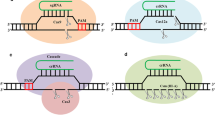Abstract
Heterotrimeric (αβγ) G proteins interact with sensory receptors to transduce signals to downstream effectors in eukaryotes. We previously reported that GNA-1 from Neurospora crassa is a microbial member of the Gαi family found in higher organisms. Deletion of gna-1 leads to female sterility, slower growth rates on normal and hyperosmotic solid medium, and increased resistance to heat and oxidative stress. In this study we compare mammalian genes for proteins of the Gαi subfamily (Gαi, Gαo, Gαt and Gαz), and Gαs (which is not a member of the Gαi family) with the N. crassa gna-1 gene with respect to their ability to complement Δgna-1 phenotypes. Northern analysis detected full-length transcripts of all these genes, except that for Gαi, in N. crassa transformants. Measurements of pertussis toxin-catalyzed ADP-ribosylation and Western analysis showed that the GNA-1, Gαz, Gαo and Gαs proteins were present in the respective transformed strains. Strains in which the mammalian Gα protein could be detected were subjected to phenotypic testing. During the vegetative cycle, none of the mammalian Gα genes complemented the thermotolerance phenotype of Δgna-1. However, the three expressed mammalian Gα genes achieved at least partial complementation of the defects in vegetative apical extension rate. cAMP levels did not correlate with restoration of vegetative growth rate by the mammalian genes. During the sexual cycle, Gαo was the only mammalian Gα gene that rescued the defect in female fertility characteristic of Δgna-1 strains. Alignment of GNA-1, Gαz, Gαo and Gαs protein sequences revealed correlations between the observed complementation pattern and the degree of identity to GNA-1 in various functional motifs. The finding that Gαz gave the best restoration of vegetative growth but could not restore normal female fertility implies that GNA-1 regulates different pathways that are important for vegetative and sexual growth in N. crassa.
Similar content being viewed by others
Author information
Authors and Affiliations
Additional information
Received: 15 June 1999 / Accepted: 14 February 2000
Rights and permissions
About this article
Cite this article
Yang, Q., Bieszke, J. & Borkovich, K. Differential complementation of a Neurospora crassa Gαi mutation using mammalian Gα protein genes. Mol Gen Genet 263, 712–721 (2000). https://doi.org/10.1007/PL00008687
Issue Date:
DOI: https://doi.org/10.1007/PL00008687




